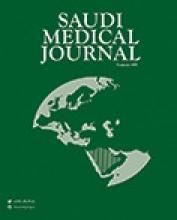Abstract
OBJECTIVE: To assess the effectiveness of misoprostol in cervical ripening before evacuation of conception in the first trimester missed miscarriages, and to compare between oral and vaginal routes of administration.
METHODS: A randomized controlled study was carried out in Baghdad Teaching Hospital, Baghdad, Iraq in 2006. One hundred and twenty women with first trimester missed miscarriages were divided into 2 study groups, randomized for oral and vaginal 400 mcg misoprostol priming of cervix, and 2 control groups randomized for oral and vaginal placebo, before undergoing surgical evacuation of conception after 3 hours. Measured outcomes were: post medication cervical dilatation, time needed to dilate the cervix surgically, blood loss, and development of the side effects of misoprostol.
RESULTS: Post medication cervical dilatation was higher in the misoprostol group 7.07 ± 1.36 mm for oral misoprostol, 7.77 ±1.22 mm for vaginal misoprostol, versus the control groups 2.43 ± 0.5 mm. Post medication cervical dilatation was significantly higher in the vaginal misoprostol group, compared to the oral groupp=0.04. The time required to dilate the cervix in the misoprostol group was shorter, compared with placebo. There were no significant differences in the amount of blood loss between oral p=0.74, and vaginal misoprostol groups p=0.62, and gastrointestinal side effects were significantly more in the oral misoprostol group p=0.014.
CONCLUSION: Misoprostol is an effective cervical priming agent when administered either orally or vaginally before evacuation of conception in the termination of the first trimester missed miscarriage.
- Copyright: © Saudi Medical Journal
This is an open-access article distributed under the terms of the Creative Commons Attribution-Noncommercial-Share Alike 3.0 Unported, which permits unrestricted use, distribution, and reproduction in any medium, provided the original work is properly cited.






